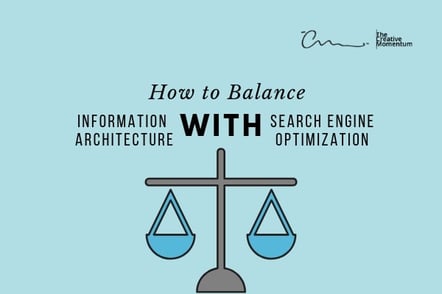
Once upon a time, website owners were flummoxed by two competing desires:
- Website design and content that was compelling, usable, useful, and pleasurable for human visitors
- Website design and content that was optimized for search engine optimization (SEO).
The information architects—the people who design pages with human users in mind—often were at loggerheads with the SEO experts, who wanted pages that web crawlers could find easily and rank highly in search results. Depending on which party had more clout on the web implementation team, a website might end up optimized for one at the cost of the other.
Happily, progress in search engine technology has changed SEO best practices to the point where you don’t have to sacrifice the usability of a website in order to eke out a higher search ranking. Old habits die hard, however, and some SEO practices are still widely used, even though they are no longer necessary or carry less weight than they once did with the major search engines. Our purpose in this article is to put to rest some of these ideas that drove the notion that you can’t have both good SEO and pleasant page design.
About Information Architecture
First, a refresher (or introduction) to the concept of information architecture. “Information architecture” (IA) is a fancy term for designing the structure and presentation of information—whether in a web page, app, online community, or what have you—in such a way that the consumer of that information gets maximum value from it.
It’s important not only in conveying information but also in engaging the users. In the context of a website, “engaging the users” often means keeping them on the page long enough to buy something, or at least tell their friends about it.
Good IA has a couple of core characteristics:
- A logical structure that enables users to find what they need quickly and easily
- Intuitive navigation cues
- Judicious use and placement of graphics to convey information
Good IA, in short, results in page design that gives website visitors what they need, when they need it, without a lot of poking around and dead ends.
IA vs. SEO
IA’s conflicts with SEO often revolved around keyword placement: where on a page to place text with those all-important keywords. Keywords, the thinking went, should be concentrated near the top of the page. The problem with this approach is that some web pages benefit by having graphic closer to the top and the text further down. Bombarding site visitors with dense text where a picture would have more impact is a recipe for driving them elsewhere. “Good” SEO might have brought them to the page, but it’s worthless if bad page design subsequently makes them leave.
For another example, a once-common SEO practice was to load a page’s footer with lots of links and keywords, even if they weren’t that useful for people. Links in a footer are necessary, of course, but let’s face it: People go to the footer typically to find contact information, terms and conditions, and other boilerplate content. It’s not the first place they look at to find “real” content.
Fortunately, search engines have become smarter over the years. Keyword placement is less important, and the search engines aren’t fooled by overloading footers with keywords and links that they know are rarely used by actual people.
IA and SEO in Harmony
Now that search engines “think” more like humans, there is less reason to decouple good IA from good SEO. Good SEO practices now have much more in common with good IA practices.
For example, a good way to organize a website, from an IA standpoint is “general to specific.” A top-level page might discuss a type of vehicle—SUVs, for instance—and link to sub-pages that talk about SUVs from different countries, which then link to pages for specific manufacturers. This concept isn’t unique to websites—book indexes have been arranged this way for many years. It aligns well with how humans navigate an information space.
In this type of website arrangement, each page should link not only to its sub-pages, but back to its parent page. From an SEO standpoint, these links don’t need to be laden with keywords; the important thing is that they are links that help users navigate the content.
Those up- and down-links shouldn’t be the only ones, of course—it often makes sense to link to related content. Don’t overdo it, though; adding links to unrelated or marginally related content doesn’t buy you anything for SEO and may overwhelm the user with useless links.
Another IA best practice that lends itself well to SEO is combining closely related content onto a single page. Continuing our SUV example, if you have content about a certain model of SUV with a six-cylinder engine and other content about the same model with an eight-cylinder engine, it’s probably best to combine the two into one page, because they have the same “intent.” You might, however, separate content about the SUV with a gas engine from content about the same SUV with an electric motor or hybrid drive.
Again, search engines are aligned with humans on this issue: What are people likely to search for? Someone who’s interested in an SUV with a gas engine would appreciate a comparison of six- and eight-cylinder models, but someone who’s searching for a hybrid SUV probably has no interest in seeing information about gas engines on the same page. Understanding how real people are likely to search for things, and what content they do and don’t want to see, goes a long way towards arranging your content that makes sense for both IA and SEO.
Bottom Line
It is no longer necessary to choose between good page design and optimized SEO. You can have both. And you need both: SEO will bring the visitors to your site, but IA will keep them there. Your IA expert and SEO expert can now work together to build a compelling, highly ranked website.


